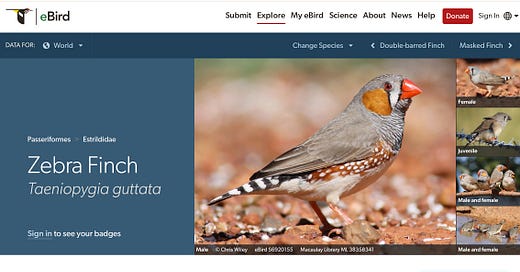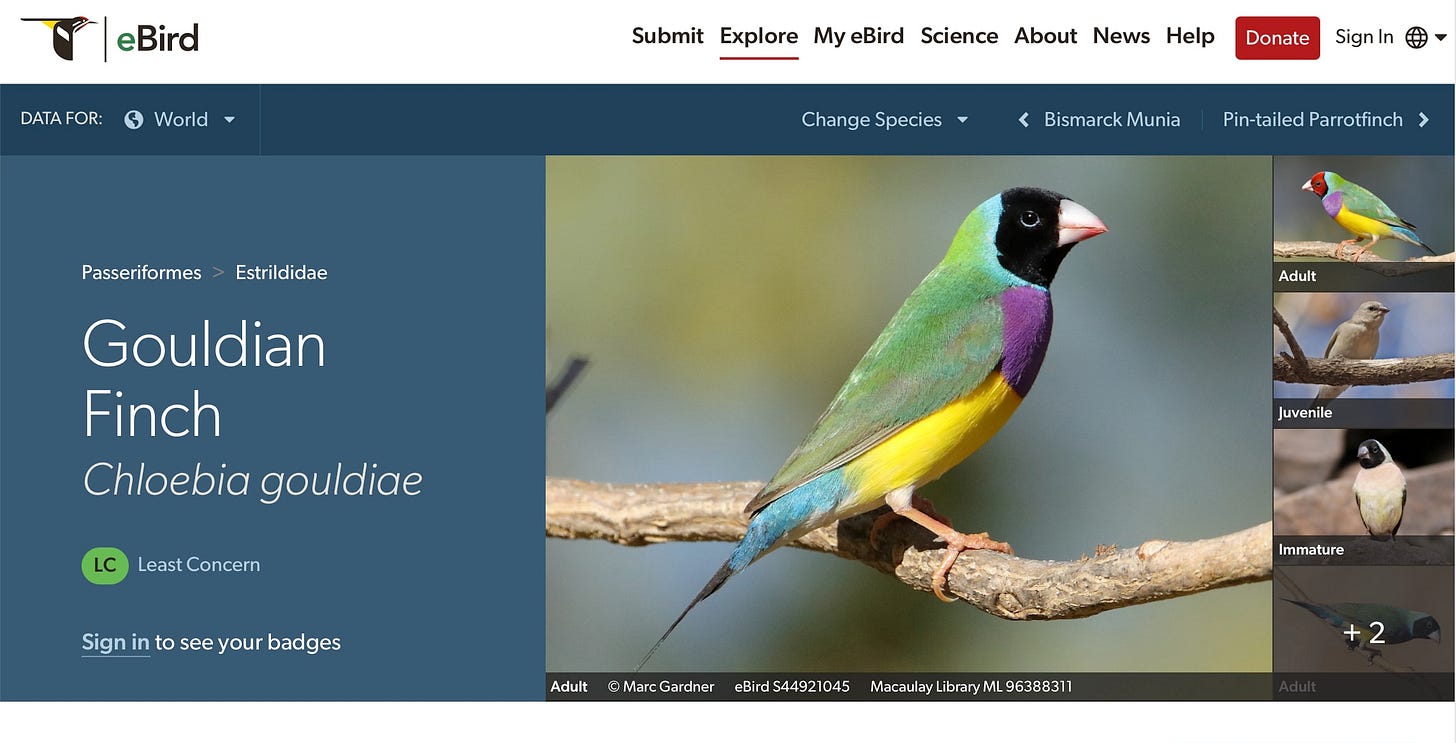Non-venomous Australian
Today’s special animal friend is the Gouldian Finch, Chloebia gouldiae, a colorful little Australian passerine of which three can be found in a big cage in the waiting room of Son E’s orthodontist. I thought they were conures, but the receptionist said “Australian finches,” which is true – finches native to Australia – but not exactly accurate, because “Australian finch” is not a species. Australian zebra finches are a species, Taeniopygia guttata castanotis.
Anyway, back to the Gouldian finch. It’s really pretty with lots of different colors. There are several “color morphs” with different arrangements of black and red on the head. There is not much difference between the sexes, but females’ breasts are a paler purple than males’.
Gouldian finches are found on the northern coast of Australia. They like open woodlands, including forests with burned areas, because they nest in tree cavities. They will travel up to 4 kilometers to reach a spring or water hole. Their primary food is grass seeds from spear grass and spinifex plants. They are sociable and, outside breeding season, form flocks of up to 2,000 with long-tailed finches and masked finches.
Mating occurs during the dry season, when seeds are plentiful. Males bob about and fluff their colorful feathers to attract females. They also sing. Breeding pairs are usually the same color morph. Mixed pairs have forms of genetic incompatibility and have less breeding success: fewer eggs, fewer hatches, etc. A healthy pair will produce 4 to 8 eggs. Both adults help incubate the eggs for 15 days. The young are very needy and require feeding for up to 7 weeks.
Gouldian finches are rated Least Concern by IUCN but considered Near Threatened by Bird Life International. Habitat loss, especially due to cattle grazing in the grasslands, is the main threat. They are also vulnerable to parasites and infections. The Australian population has ups and downs. Commercial export of native Australian animals has been illegal since 1999, but many Gouldian finches were trapped for the pet trade before that. There are legal breeding populations in many countries, including the U.S.





https://nypost.com/2025/05/28/us-news/fbi-director-kash-patel-reveals-agency-overwhelmed-by-james-comey-copycats-after-86-47-post-forcing-agents-off-child-sex-predator-drug-trafficking-cases/
'The FBI has been overwhelmed investigating James Comey “copycats” in the wake of his controversial “86 47” Instagram post, Director Kash Patel revealed Wednesday.'
This sounds like a parody, but it doesn't seem to be. It looks like the FBI is actually going around investigating social media posts showing items arranged as 86 47 instead of ... whatever the FBI normally does.
Good morning, everyone. I have a doctor appointment this morning with blood work, so I'm not drinking coffee, and it's horrible.